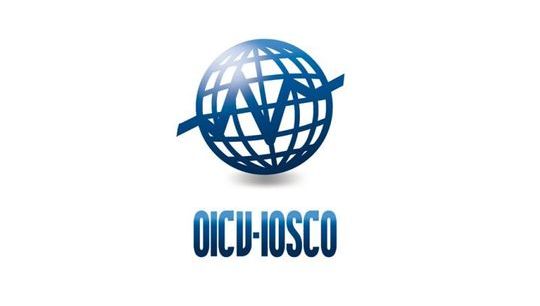Progression in Cayman
By Deanna Derrick, Business Unit Director, Hedge Funds, Intertrust Cayman
Published: 12 July 2017
“In the Cayman Islands, we have seen an increasing number of separate classes being created in funds to specifically accommodate the increasing demand for SRI strategies.”
Sustainable Responsible and Impact Investing (SRI) has been gaining increased focus globally as investors give greater consideration to environmental, social and governance (ESG) factors despite ESG factors being widely considered non-financial in nature. Independent directors offer investors and managers increased confidence regarding adherence to the ESG programmes by virtue of the directors’ impartial oversight. Independent directors need to grasp the strategies and activities of a SRI focused fund to help provide the appropriate checks and balances needed to ensure the fund’s ESG monitoring programmes are effective.
When and how did it all begin?
From the 1960s, mostly through political unrest, SRI gained in popularity. Arguably, significant advances and the growth of SRI started upon the formation of the United Nations-backed Principles for Responsible Investment (PRI) in early 2006. In the first year, PRI had 100 signatories with $6.5trn of AuM. PRI has a voluntary and aspirational set of six investment principles. One principle is the incorporation of ESG factors into investment practices, and other principles address good governance, integrity, accountability and transparency. PRI signatories account for approximately half of global institutional assets ($62trn) with over 1,700 signatories including both investors and asset managers.
The Sustainable Accounting Standards Board (SASB) noted that over half of the almost 300 policy instruments established in the 50 largest economies to encourage investors to consider long-term value drivers, including ESG, were established between 2013 and 2016 despite limited sustainable investing concepts (primarily negative/exclusionary) being around since the late 1800s. SASB was established in 2010 to address the need for ESG related data that is relevant, reliable and comparable. The increased number of policy instruments aligns with the growth of PRI signatories and investor asset allocation to SRI.
What market share is currently attributed to SRI investments?
As detailed in the Global Sustainable Investment Review 2016 (GSIR), released by the Global Sustainable Investment Alliance (GSIA) at the end of March 2017, global sustainable investments accounted for approximately $22.9trn of AuM at the start of 2016. Globally sustainable investments grew 25.2% over 2014. SRI in the United States alone represented $8.72trn of the AuM, representing an increase of 33% over 2014. Unsurprisingly, 53% of the AuM is attributable to Europe but encouragingly the relative US contribution has increased to 38% of the global sustainable investments. As expected, the report indicated that asset allocation remained weighted towards the institutional investors; however, the relative growth of retail investors in Canada, Europe and the United States had increased to 26% with over 33% of the SRI AuM invested by retail investors in the US.
What are the definitions and how are they measured?
GSIA used an inclusive definition for sustainable investing which encompassed screening (negative /exclusionary, positive/best-in class or norms-based), ESG factor integration, sustainability themed investing, impact/community based investing and corporate engagement/shareholder action.
Negative/exclusionary screening represented the largest sustainable investing strategy globally ($15trn in assets) as well as the largest sustainable-themed strategy in Europe. ESG factor integration ($10.4 trn) and corporate engagement/shareholder action ($8.4trn) were the second and third largest SRI activities, with the US being the biggest contributor towards ESG factor integration.
GSIA acknowledges that increased disclosure by PRI signatories is enhancing ESG transparency. Given this, the GSIA report notes that several factors including market penetration of SRI products, development of new products that incorporate ESG criteria and the incorporation of ESG criteria by large asset managers across wider portions of holdings are driving the increased growth in ESG.
What are you seeing from a Cayman funds perspective?
In the Cayman Islands, we have seen an increasing number of separate classes being created in funds to specifically accommodate the increasing demand for SRI strategies. Unique classes are created in ongoing funds that include SRI strategies and activities. In addition, a number of separate fund entities that specifically integrate SRI themes and strategies, including screening and the integration of ESG factors, have been launched as either funds of one (similar to a managed account) or as collective investment funds.
To a lesser extent, we still see side letter provisions that integrate SRI themes; however, notably the side letters more frequently address negative/exclusionary activities rather than a comprehensive SRI programme. ESG factors have become increasing topical with credit and emerging markets managers.
What role do independent directors play in supporting SRI strategies?
The oversight by the board of Cayman funds encompassing SRI needs to include an understanding of the strategies and activities being employed in order to develop an effective monitoring programme. Given the variety of activities and factors that SRI can incorporate, the board will want to consider points relevant to the strategies and activities to effectively monitor the specific aspects of the SRI programme.
For example, if a fund intends to deploy positive best in class screening to accomplish the SRI strategy, it is important that the fund does not drift to a negative/exclusionary methodology; therefore, the board meetings of the fund directors should include monitoring points that confirm that best in class screening has been used as the fund’s SRI programme is executed. The fund’s board of directors needs to understand the programme so that they can appropriately monitor adherence and application. Knowledgeable independent directors can provide the objective oversight as an unbiased check and balance for investors.
We also see independent directors being appointed to advisory committees. Advisory committees are formed by the boards of the funds and can assist with independent oversight of the SRI programme to help mitigate conflicts that arise when the fund board members are part of the investment management team.
What lies ahead for SRI?
Despite the recent delay in the US Department of Labor (DOL) fiduciary rule anticipated in April 2017 and Trump’s executive orders and proposed budget cuts affecting environment and social programmes, the future of SRI appears to be increased AuM commitment by both institutional and retail investors. At the end of 2016, DOL updated their guidance for ERISA plans regarding statements of investment policy (including proxy voting policies). This new guidance confirms that material ESG considerations are permissible when a trustee develops its statement of investment policies[i]; a clarification which may result in even greater ERISA plan asset allocation to SRI.
Independence on the board of funds holding Plan assets provides oversight that is removed from the day-to-day deployment of the ESG program. Given independent directors provide conflict-free governance in the best interest of the investors, plan trustees will gain valuable comfort in discharging their fiduciary duties because they have independent monitoring of not only the fund’s performance but also the adherence to investment policies integrating ESG factors.
To date, SRI and ESG factors continue to be topical with increasing inflows. Globally, a number of managers are launching SRI funds integrating ESG factors. We believe SRI growth in emerging markets will continue as emerging markets embrace ESG factors and improve reporting. We also anticipate a growth in analysis regarding the impact of incorporating ESG factors to investment performance.
Recently, PRI has launched a due diligence questionnaire for the practices for responsible investing as a tool for investors and managers. PRI’s six principles will continue to encourage growth in SRI related funds. As SRI continues to grow, investors and managers both benefit from the conflict free oversight provided by the independent directors on funds boards deploying SRI strategies.







